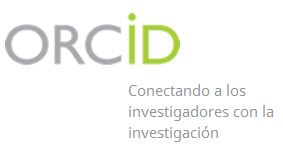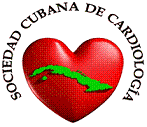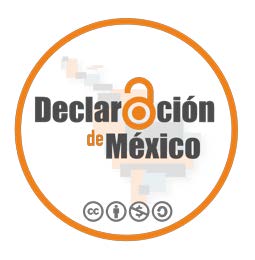Beneficio de la intervención coronaria percutánea, en pacientes rescatados de paro cardiorrespiratorio
Texto completo:
PDFResumen
Objetivo.
Determinar el beneficio del ICP en pacientes recuperados de un PCR en el Instituto de Cardiología y Cirugía Cardiovascular de la Habana Cuba
Método:
Se realizó un estudio descriptivo, longitudinal retrospectivo, que incluyó 32 pacientes con diagnóstico de PCR recuperada atendidos en el Instituto de Cardiología y Cirugía Cardiovascular durante el periodo comprendido entre enero de 2011 hasta diciembre de 2016.
Resultados:
La mayoría de los pacientes recuperados de PCR, el shock cardiogénico fue la principal indicación de coronariografía (40,0%), la que se realizó con mayor frecuencia en las primeras 24-48 horas (40,0%). La realización de coronariografía o ICP no se relacionó con el estado al egreso de los pacientes recuperados de PCR.
Conclusiones:
Se concluye que los pacientes recuperados de PCR exhiben un elevado riesgo cardiovascular aterosclerótico, con una elevada prevalencia de enfermedad coronaria significativa.
Palabras clave
Referencias
Rodríguez-Mañero M, Macías-Gallego A, García-Bolao I. Protocolo clínico de muerte súbita. Medicine. 2009; 10:2956-9.
Gazmuri RJ, Álvarez-Fernández JA. Tendencias en resucitación cardiopulmonar. Med Intensiva. 2009; 33:31-9
Jacobs I, Nadkarni V, Bahr J, Berg RA, Billi JE, Bossaert L, et al. Cardiacarrest and cardiopulmonaryresuscitationoutcomereports: update and simplification of theUtsteintemplatesforresuscitationregistries. Resuscitation. 2004; 63:233-49.
Nichol G, Thomas E, Callaway CW, Hedges J, Powell JL, Aufderheide TP, et al; ResuscitationOutcomesConsortiumInvestigators. Regional variation in out-of-hospital cardiacarrestincidence and outcome. JAMA. 2008; 300:1423-31.
Roger VL, Go AS, Lloyd-Jones DM, Adams RJ, Berry JD, Brown TM, et al. HeartDisease and StrokeStatistics 2011 Update: A Reportfromthe American HeartAssociation. Circulation. 2011; 123:18-209.
Berdowski J, Berg RA, Tijssen JGP, Koster RW. Global incidences of out-of-hospital cardiacarrest and survivalrates: systematicreview of 67 prospectivestudies. Resuscitation. 2010; 81:1479-87.
Leal-Forero LC, Martínez-Malo LC, Navarro-Vargas JR. La reanimación cerebro cardiopulmonar: estado del arte. RevFacMed. 2014; 62:149-55.
Larsen JM, Ravkilde J. Acutecoronaryangiography in patientsresuscitatedfromout-of-hospital cardiacarrest – a systematicreview and meta-analysis. Resuscitation. 2012; 83:1427-33.
Spaulding CM, Joly LM, Rosenberg A, Monchi M, Weber SN, Dhainaut JFA, et al. Immediatecoronaryangiography in survivors of out-of-hospital cardiacarrest. N Engl J Med. 1997; 336:1629-33.
Camuglia AC, Randhawa VK, Lavi S, Walters DL. Cardiaccatheterizationisassociatedwith superior outcomesforsurvivors of out of hospital cardiacarrest: review and meta-analysis. Resuscitation. 2014; 85:1533-40.
Grasner JT, Meybohm P, Caliebe A, Böttiger BW, Wnent J, Messelken M, et al. Post resuscitationcarewithmildtherapeutichypothermia and coronaryinterventionafterout-of-hospital cardiopulmonaryresuscitation: a prospectiveregistryanalysis. CritCare. 2011; 15:R61.
Weiser C, Testori C, Sterz F, Schober A, Stöckl M, Stratil P, et al. Theeffect of percutaneouscoronaryintervention in patientssufferingfrom ST-segmentelevationmyocardialinfarctioncomplicatedbyout-of-hospital cardiacarreston 30 dayssurvival. Resuscitation. 2013; 84:602-8.
18) Nikolaou NI, Hans-Richard A, Bellou A, Beygui F, Bossaert L, Cariou A, et al. EuropeanResuscitation Council GuidelinesforResuscitation 2015 Section 8. Initialmanagement of acutecoronarysyndromes. Resuscitation. 2015; 95:264-77.
Shuvy M, Morrison LJ, Koh M, Qiu F, Buick JE, Dorian P, et al. Long-termclinicaloutcomes and predictorsforsurvivors of out-of-hospital cardiacarrest. Resuscitation. 2107; 112:59-64.
Lau CSM, Pourriahi M, Ward A, Kulkarni KP, Mahendraraj K, Chamberlain RS. PercutaneousCoronaryIntervention Reduces Mortality in Out-of-Hospital CardiacArrestafterAcuteCoronarySyndrome: AnOutcomes-BasedStudyfromtheNationwideInpatientSampleDatabase. SurgicalScience. 2017; 8:27-36.
Dumas F, Bougouin W, Geri G, Lamhaut L, Rosencher J, Pène F, et al. EmergencyPercutaneousCoronaryIntervention in Post-CardiacArrestPatientsWithout ST-SegmentElevationPattern: InsightsFromthe PROCAT II Registry. JACC CardiovascInterv. 2016; 9:1011-8.
Janssens GN, Lemkes JS, van der Hoeven NW, van Royen N. Coronaryangiography and percutaneouscoronaryinterventionafterout-of-hospital cardiacarrest: majorleapstowardsimprovedsurvival?.Journal of ThoracicDisease. 2017; 9:5-8.
Rosell F, Mellado F, López JB, Fernández P, Ruiz MM, Martínez M, et al. Supervivencia y estado neurológico tras muerte súbita cardiaca extrahospitalaria. Resultados del Registro Andaluz de Parada Cardiorrespiratoria Extrahospitalaria. RevEspCardiol. 2016; 69:494-500.
Hollenbeck RD, McPherson JA, Mooney MR, Cash ME, Kelley MB, Scott CR, et al. Earlycardiaccatheterizationisassociatedwithimprovedsurvival in comatosesurvivors of cardiacarrestwithout STEMI. Resuscitation. 2014; 85:88-95.
Zanuttini D, Armellini I, Nucifora G, Carchietti E, Trillò G, Spedicato L, et al. Impact of emergencycoronaryangiographyon in-hospital outcome of unconscioussurvivorsafterout-of-hospital cardiacarrest. Am J Cardiol. 2012; 110:1723-8.
Aurore A, Jabre P, Liot P, Margenet A, Lecarpentier E, Combes X. Predictivefactorsfor positive coronaryangiography in out-of-hospital cardiacarrestpatients. Eur J EmergMed. 2011; 18:73-6.
Cronier P, Vignon P, Bouferrache K, Aegerter P, Charron C, Templier F. Impact of routinepercutaneouscoronaryinterventionafterout-of-hospital cardiacarrestdue to ventricular fibrillation. CritCare. 2011; 15:R122.
Grasner JT, Meybohm P, Caliebe A, Böttiger BW, Wnent J, Messelken M. et al. Postresuscitationcarewithmildtherapeutichypothermia and coronaryinterventionafterout-of-hospital cardiopulmonaryresuscitation: a prospectiveregistryanalysis. CritCare. 2011; 15:R61.
Tomte O, Andersen GO, Jacobsen D, et al. Strong and weakaspects of anestablished post-resuscitationtreatmentprotocol—a five-yearobservationalstudy. Resuscitation. 2011; 82:1186-93.
Bro-Jeppesen J, Kjaergaard J, Wanscher M, Drægni T, Auestad B, Sunde K. Emergencycoronaryangiography in comatosecardiacarrestpatients: do real-lifeexperiencessupporttheguidelines? EurHeart J AcuteCardiovascCare. 2012; 1:291-301.
Waldo SW, Armstrong EJ, Kulkarni A, Hoffmayer K, Kinlay S, Hsue P, et al. Comparison of clinicalcharacteristics and outcomes of cardiacarrestsurvivorshaving versus nothavingcoronaryangiography. Am J Cardiol. 2013; 111:1253-8.
Strote JA, Maynard C, Olsufka M, Nichol G, Copass MK, Cobb LA, et al. Comparison of role of early (lessthansixhours) to later (more thansixhours) or no cardiaccatheterizationafterresuscitationfromout-of-hospital cardiacarrest. Am J Cardiol. 2012; 109:451-4.
Dankiewicz J, Nielsen N, Annborn M, Cronberg T, Erlinge D, Gasche Y. Survival in patientswithoutacute ST elevationaftercardiacarrest and associationwithearlycoronaryangiography: a post hoc analysisfromthe TTM trial. IntensiveCareMed 2015; 41:856-64.
Montalescot G, Cayla G, Collet JP, Elhadad S, Beygui F, Le Breton H. Immediate vs delayedinterventionforacutecoronarysyndromes: a randomizedclinical trial. JAMA. 2009; 302:947-54.
Riezebos RK, Ronner E, Ter Bals E, Slagboom T, Smits PC, ten Berg JM. Immediate versus deferredcoronaryangioplasty in non–ST-segmentelevationacutecoronarysyndromes. Heart. 2009; 95:807-12.
Thiele H, Rach J, Klein N, Pfeiffer D, Hartmann A, Hambrecht R, et al. Optimaltiming of invasiveangiography in stable non–ST-elevationmyocardialinfarction: the Leipzig Immediate versus early and late PercutaneouScoronaryInterventiontriAl in NSTEMI (LIPSIA-NSTEMI Trial). EurHeart J. 2012; 33:2035-43.
Lemkes JS, Janssens GN, Oudemans-van Straaten HM, Elbers PW, van der Hoeven NW, Tijssen JG, et al. Coronaryangiographyaftercardiacarrest: Rationale and design of the COACT trial. Am Heart J. 2016; 180:39-45.
Joffre J, Varenne O, Bougouin W, Rosencher J, Mira JP, Cariou A. Stentthrombosis: anincreased adverse eventafterangioplastyfollowingresuscitatedcardiacarrest. Resuscitation. 2014; 85:769-73.
Rosillo SO, Lopez-de-Sa E, Iniesta AM, de Torres F, del Prado S, Rey JR, Armada E, Moreno R, López-Sendón JL. Istherapeutichypothermia a risk factor forstentthrombosis? J Am CollCardiol. 2014; 63:939-40.
Dumas F, White L, Stubbs BA, Cariou A, Rea TD. Long-term prognosis followingresuscitationfromout of hospital cardiacarrest: role of percutaneouscoronaryintervention and therapeutichypothermia. J Am CollCardiol. 2012; 60:21-7.
Reynolds JC, Callaway CW, El Khoudary SR, Moore CG, Álvarez RJ, Rittenberger JC. Review of a largeclinical series: coronaryangiographypredictsimprovedoutcomefollowingcardiacarrest: Propensity-adjustedAnalysis. J IntCareMed. 2009; 24:179-86.
Stecker EC, Teodorescu C, Reinier K, Uy-Evanado A, Mariani R, Hugh H, et al. IschemicHeartDiseaseDiagnosedBeforeSuddenCardiacArrestIsIndependentlyAssociatedWithImprovedSurvival. J Am HeartAssoc. 2014; 3:e001160.
Bărcan A, Chițu M, Benedek E, Rat N, Korodi S, Morariu M, et al. Predictors Of Mortality In PatientsWith ST-SegmentElevationAcuteMyocardialInfarction And ResuscitatedOut-Of-Hospital CardiacArrest. TheJournal of CriticalCare Medicine 2016; 2:22-9.
Park JS, Cha KS, Lee DS, Shin D, Lee HW, Oh JH. Culpritormultivesselrevascularization in ST-elevationmyocardialinfarctionwithcardiogenic shock. Heart. 2015; 101:1225-32.
Enlaces refback
- No hay ningún enlace refback.
Copyright (c) 2019 Roberto Cuenca Zambrano, Aníbal González Trujillo, Nelson Alfredo Campos Vera

Esta obra está bajo una licencia de Creative Commons Reconocimiento-NoComercial 4.0 Internacional.












